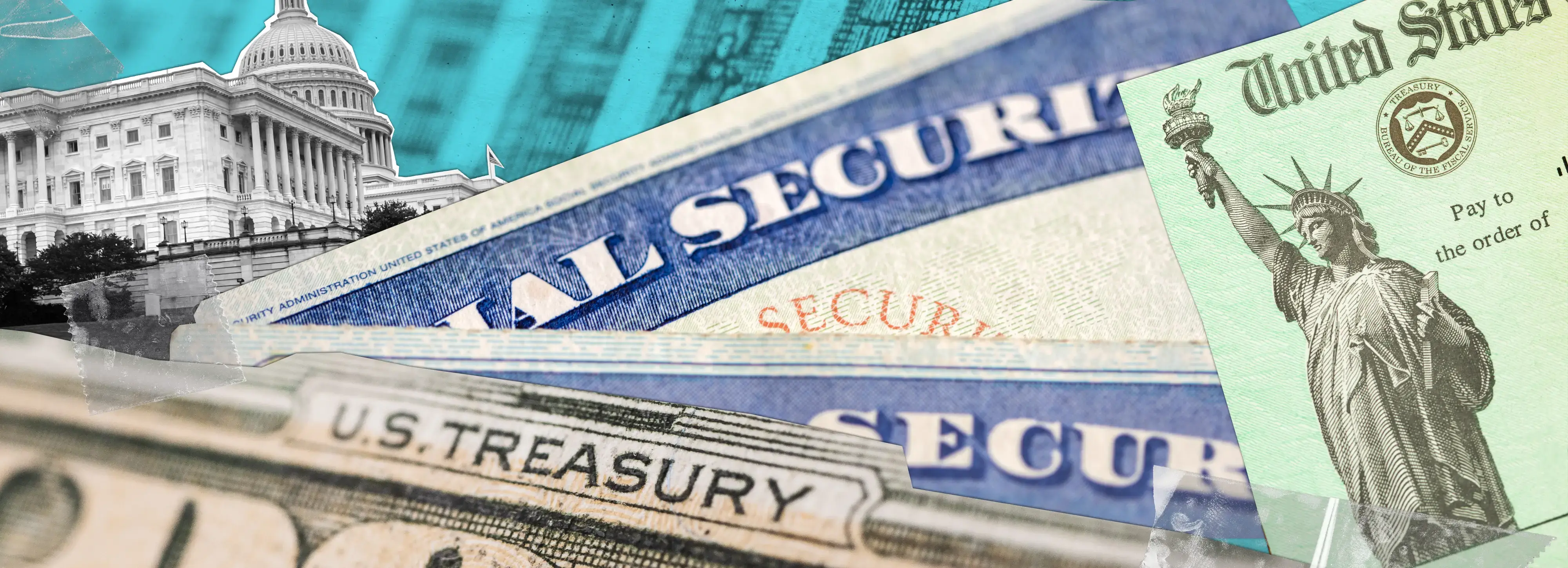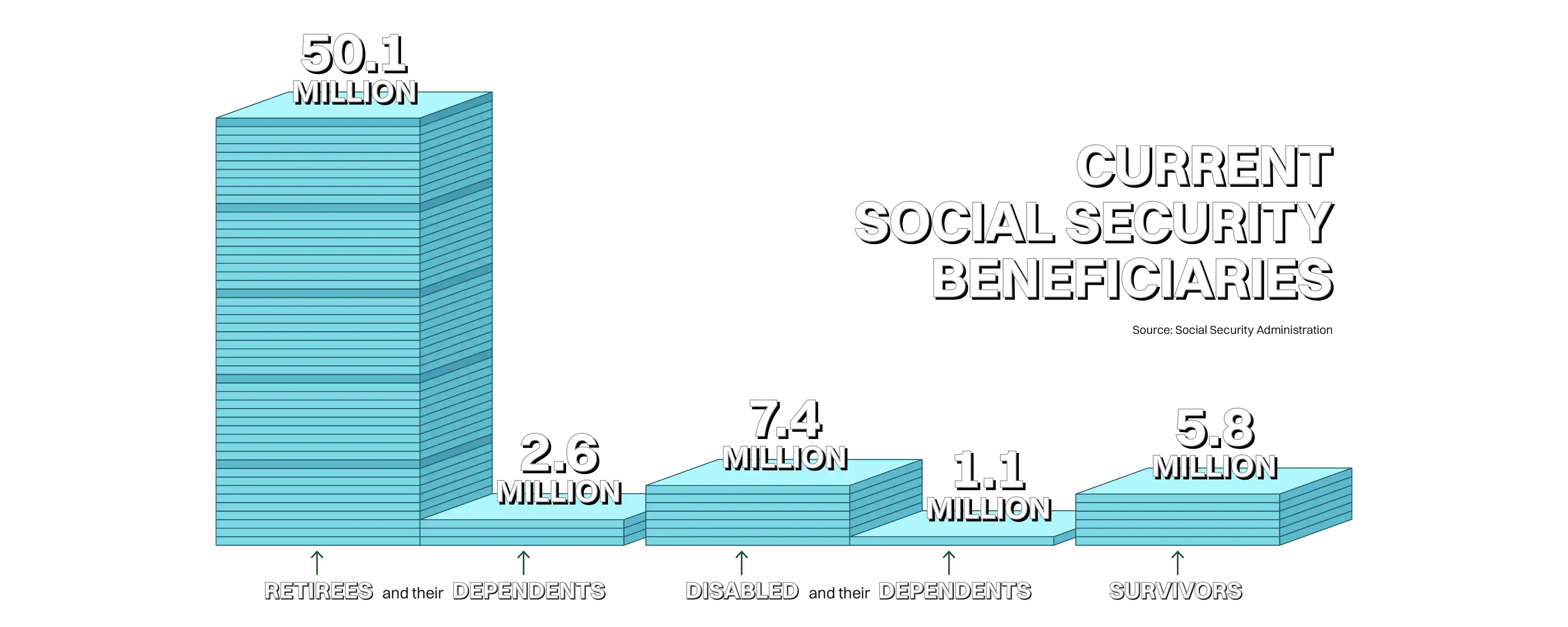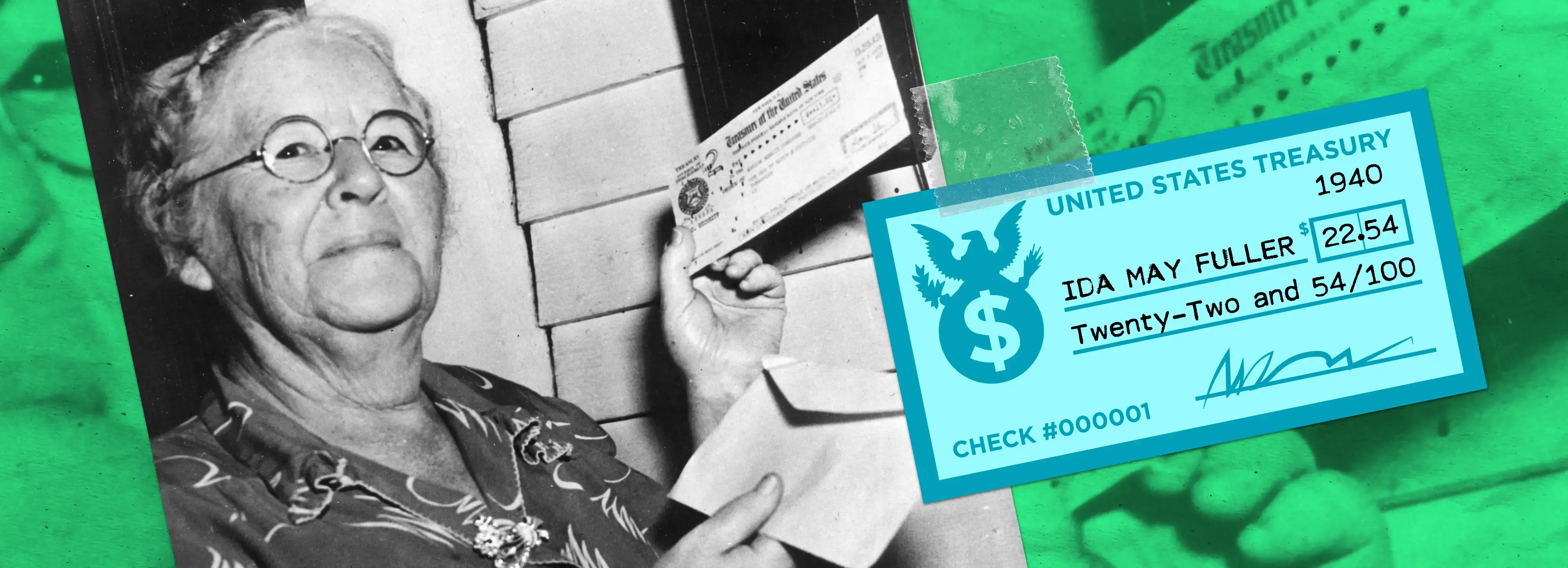Policy Breakdown
Social Security
More than 65 million Americans rely on Social Security for retirement income, survivors benefits, and disability insurance payments. The program is the single-largest expenditure in the federal budget. Learn more about how the program works, its funding challenges, and some ways to address them.

What Is Social Security?
In 1935, President Franklin
Delano Roosevelt signed the
Social Security Act.
Enacted in the midst of the Great Depression, the act aimed to protect Americans who could no longer work and prevent the elderly from falling into poverty. It established a new federal agency and charged that agency with administering a new social insurance program.
The Social Security program was essentially “old age insurance,” and it was designed to work like this:
Over the course of their working years, Americans would send a portion of their earnings to a federal “trust fund.” Then, in retirement, that trust fund would pay them a benefit, ensuring retirees would have some level of continued income later in life.
Origins
Initially, participation in the Social Security program was limited to workers in commerce and industry, which meant that only about half of America’s workers were eligible. When a factory or office worker reached 65 years old, he or she would begin receiving a Social Security check every month until he or she died.
In 1939, amendments to the act expanded the program, authorizing payments to the families of prematurely deceased workers and widows, widowers, and/or the minor children of deceased retirees.
In 1940, Social Security began sending out benefit checks. The first recipient was Ida Mae Fuller of Ludlow, Vermont. A former schoolteacher and legal secretary, Ida received a benefit check in the amount of $22.54.
EXPANSION
In the years that followed, Social Security delivered checks to millions of Americans like Ida. The program also went through some important changes.
In 1956, President Dwight D. Eisenhower expanded the program to cover self-employed Americans, farm workers, and domestic workers.
Eisenhower’s expansion also created the Early Eligibility Age. This provision allowed female workers to begin claiming Social Security as early as age 62 in return for a permanent reduction in their benefits (Male workers became eligible for the EEA later, in 1983).
And finally, the Eisenhower administration expanded coverage to disabled workers over 50 years old, and later, to all disabled workers and their dependents. This added a new benefit to the program: Disability Insurance.

RETIREMENT AGE
The massive expansion in the number of Americans who were eligible for Social Security eventually put substantial financial strain on the system.
So, in 1983, Congress and President Ronald Reagan made some modest changes to the program in order to secure its financial future. One of the most significant was a change in the age of eligibility, or the retirement age.
Since the program’s inception, American workers had been able to receive their full benefits once they reached 65 years old.
The changes enacted in the 1980s raised the retirement age to 66 for Baby Boomers … and 67 for Americans born in or after 1960.

BY THE NUMBERS
Today, the Social Security Administration estimates that over 65 million Americans receive a Social Security check each month.


In 2024, we’ll spend $1.5 trillion dollars on Social Security benefits,
making it the single most expensive program in the federal budget.


But where do we get the money for Social Security?
What are the current requirements for eligibility?
And how much money can you expect as a beneficiary?




.svg)

